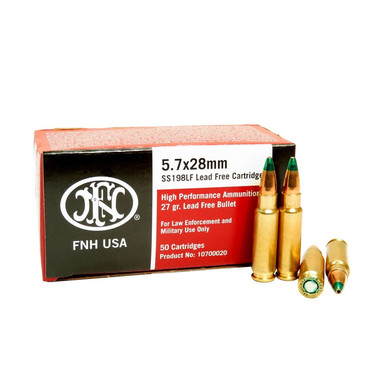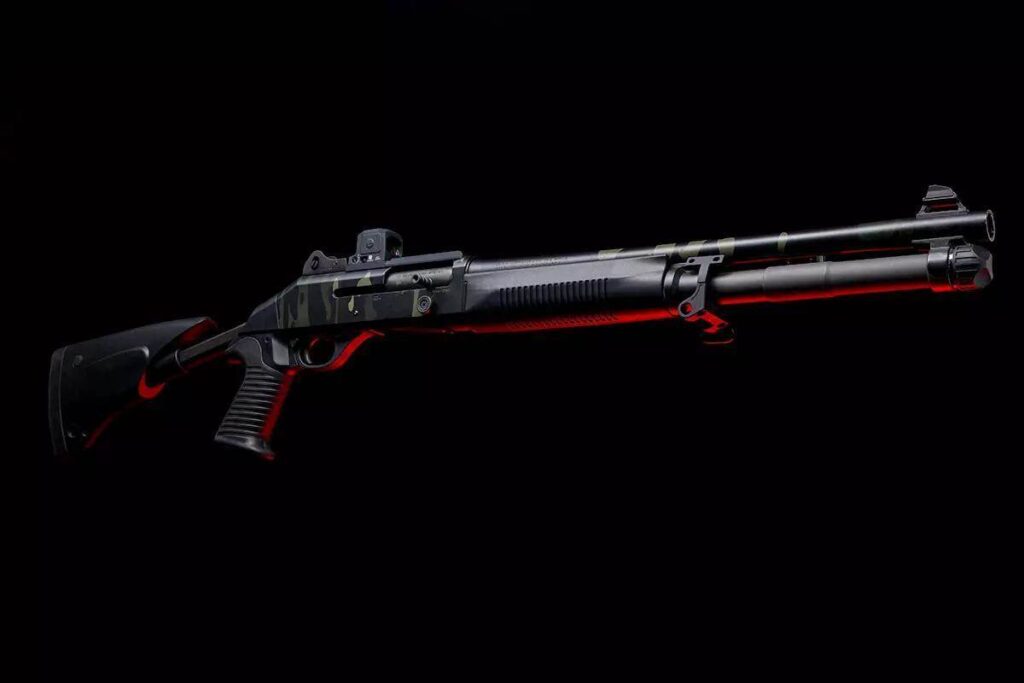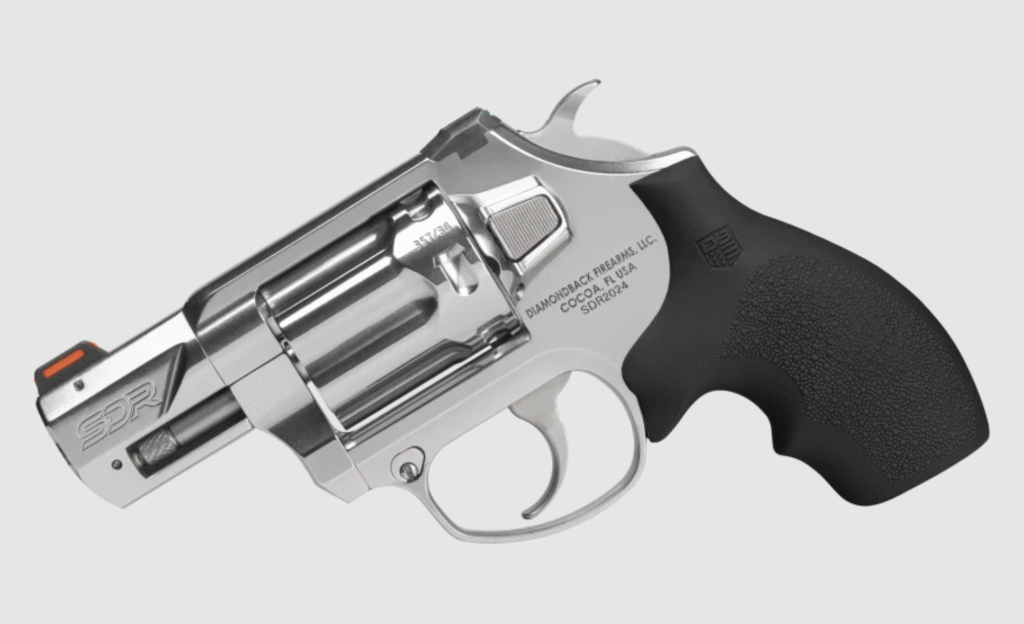The ole 5.7x28mm gets a lot of flack. Some of it was valid, some not. Yet, it seems to only be growing in popularity. PSA, Ruger, FN, and now S&W make some form of 5.7x28mm handgun, and Diamondback, FN, CMMG, and Ruger also make carbines for the caliber. It’s certainly one of the more interesting rounds on the market and falls into that odd category of not really a pistol round and not really a rifle round.
While some may claim it’s just an expensive .22 Magnum, I think we are all capable of firing up the Google machine and seeing that that’s not true. At the same time, those folks are right about ammo price. That crap is expensive. In a realm where the 5.56 and 9mm rule, it can be easy to toss 5.7x28mm aside due to the price alone. What’s the purpose of such a caliber in the civilian world?

Advertisement — Continue Reading Below
Everything has a niche, right? The 5.7x28mm turns out to be a great gun for urban areas and specifically for property defense. Most 5.7 handguns are fairly large because they need a good bit of barrel to make the round worthwhile. They tend to be tough to conceal, but for business and home defense, they can be just right.
The great debate between rifles, shotguns, and handguns for home defense has no winners, just educated users. It’s easy to see why the handgun wins sometimes. It’s lighter and smaller, well suited for close-range fights. It’s easiest to use with one hand, and that might be a serious consideration. If you are considering a handgun for home defense, then you’ve discovered a niche that the 5.7x28mm handgun fits well.
Where the 5.7x28mm Fits
Plenty of rifles and carbines exist in 5.7x28mm. These guns are great for home defense, but unless you suffer from a disability that makes an AR in 5.56 too heavy, you’d likely be best suited with an AR in 5.56. With handguns, the main weapon of choice is likely a double stack 9mm. That’s a great choice, but for some, the 5.7x28mm might be a better choice.
Advertisement — Continue Reading Below
I’m not trying to say 5.7x28mm from a handgun is better than 9mm on a ballistic front. Both calibers can reach the proper depth of penetration to matter. The 9mm does offer substantial expansion, but the 5.7’s advantage comes from overpenetration, or the lack thereof.
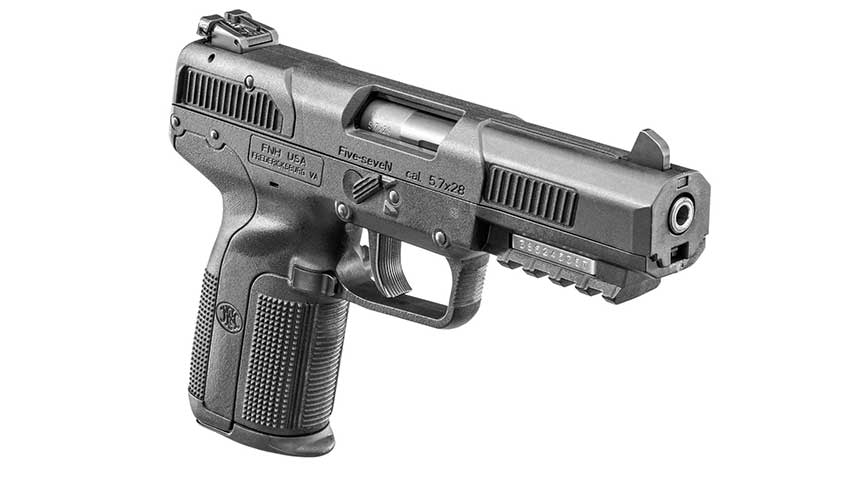
One of the big reasons we like 5.56 for home defense is that the light but fast projectile tends to lose a lot of speed when it hits a wall, even drywall. This limits the round’s potential to over-penetrate. 5.7x28mm uses the same fast-moving, lightweight projectile, and when it strikes drywall, it also loses energy rapidly and tumbles.
Advertisement — Continue Reading Below
This makes it a great option if you choose to use a handgun for home or even business defense in a densely populated area. If you live in the suburbs, or an urban apartment or condo, then the 5.7x28mm is a great choice to prevent overpenetration. The same goes for your work environment. We are often crowded in these environments, and if you can tote a big 5.7x28mm pistol, it might be worth the stress.
Additional Benefits of the 5.7x28mm Handgun
The 5.7x28mm’s benefits do not end at a reduced penetration through walls. There are numerous benefits to the round. One of the more important benefits is a higher overall capacity. The little rounds are rather small, and 20-round magazines are standard, with slightly extended magazines offering substantially more ammo than most handguns of a similar size.
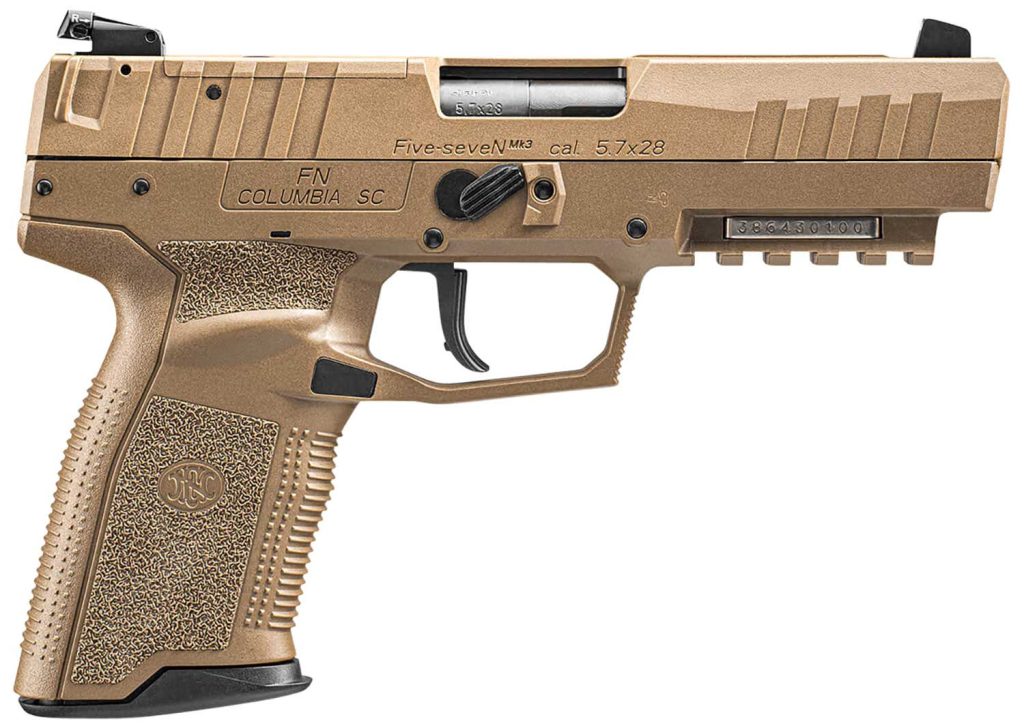
Advertisement — Continue Reading Below
While the round is quite loud from a handgun, the recoil is minimal. It’s a very smooth shooting system. The S&W M&P’s gas-operated variant is the smoothest of the three I’ve fired and likely the smoothest overall due to smart design.
Finally, most of these guns are also really easy to rack. If you have reduced hand strength, these might be a great solution for you.
This is a niche use case, and it’s not like that’s the only reason to have a 5.7x28mm handgun. They are certainly solid little guns that are flat shooting and very fun to shoot. If ammo prices were to drop, I bet we’d see a substantial increase in ownership of these handguns. Don’t disregard the 5.7 as an expensive .22 Magnum. It’s quite capable and has its own advantages.
Advertisement — Continue Reading Below
